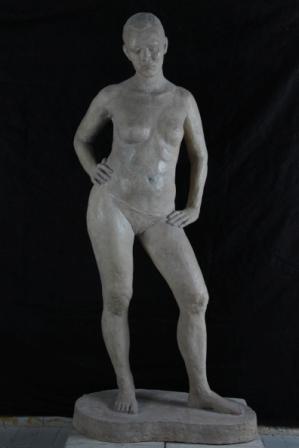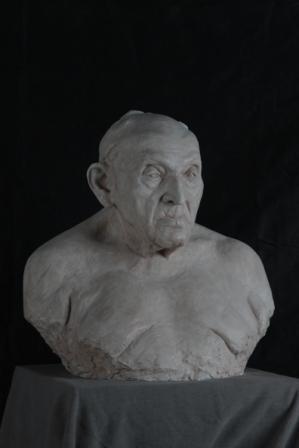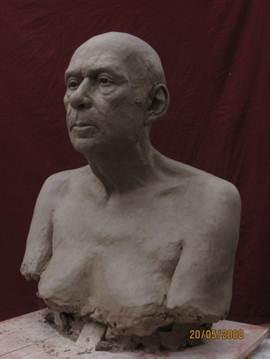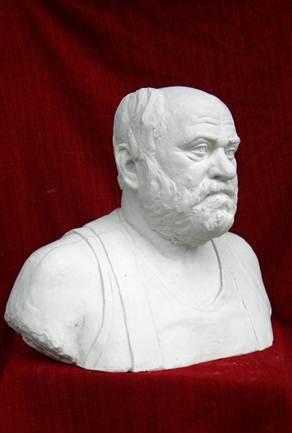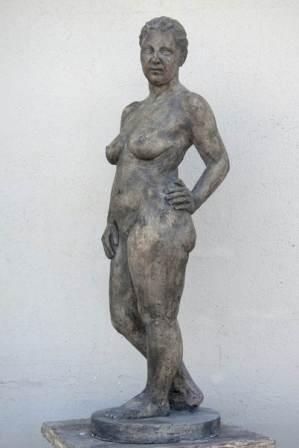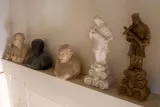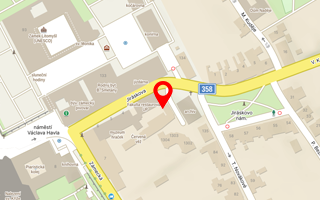For the sculptor, drawing is an integral part. In the second semester, the student is also practically introduced to painting, colour relationships and colouring. In the second semester there is a three-week exchange between painters and sculptors directly in the studios. A sculptural knowledge of the anatomy of the human body is an important prerequisite for the restoration sculptor, who will encounter cases of remodelling (filling in) missing parts of figures. The student is forced to plastically translate living matter into sculptural clay, i.e. to find a way for a correct plastic spatial action in a uniform material. Here, the student is brought to a higher artistic plane as opposed to modelling a copy. Again, the alternation of types and characters of the individual models is important - differences in structure, posture, expression, grimaces, etc. Summer practice sessions focusing on chiselling the copy into natural stone using a dotting machine are part of the course.
